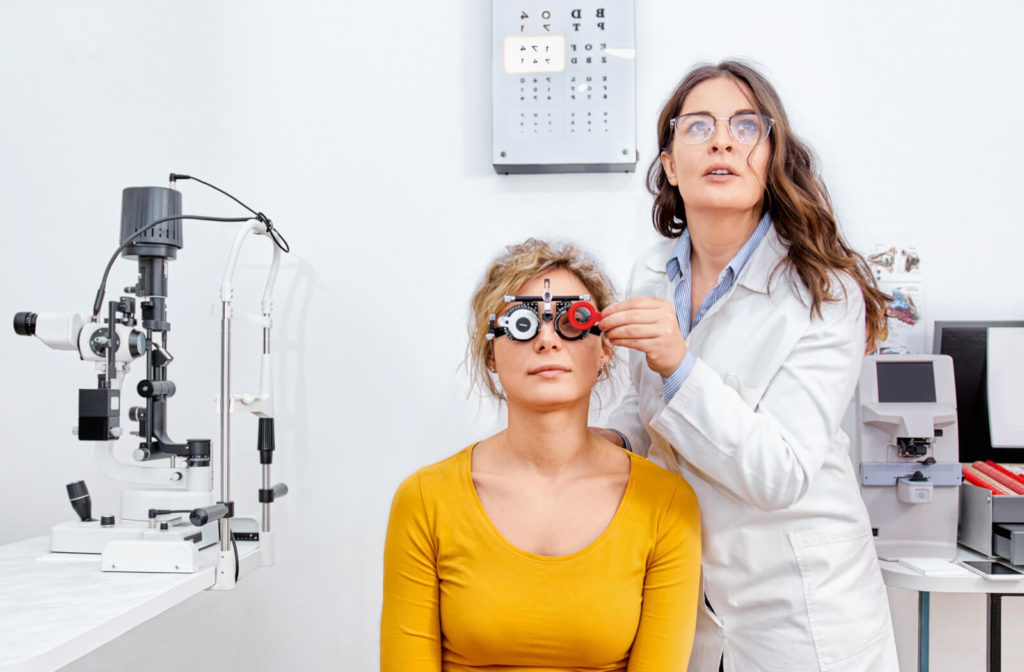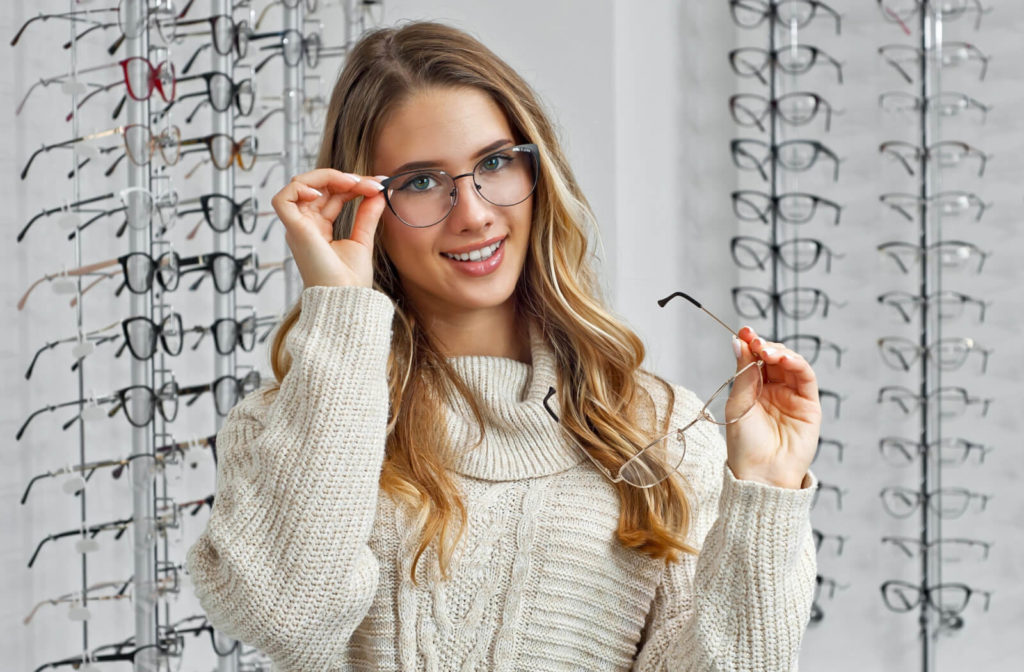Wearing Out Your Eyewear
If you wear glasses, whether all day or for occasional tasks, you know how indispensable they are. But, like any tool or accessory though, there comes a time when your frames wear out.
When appropriately cared for, your glasses should last about 2 years—which is about the same frequency adults should have an eye exam. There are many things to take into account when considering the endurance and effectiveness of your eyewear.
Prescription Changes
Prescription changes are one of the most common reasons patients need to change their glasses.
Prescriptions have an expiration date. Similar to a grocery store item, the date is an estimate, not a strict rule. Your glasses may be in good working condition, and your prescription may remain unchanged. Or, maybe you experience so slight of a change your optometrist may not recommend an update.
But, again, like a grocery store item, the expiry date helps ensure you’re not wearing “bad” glasses–namely, eyewear with flaws, microscopic damage, or an ineffective prescription.
The Canadian Association of Optometrists recommends prescriptions expire no more than 2 years—the exact timeline for when adults should book their next comprehensive eye exam. However, children may need to update their frames more frequently, as their vision needs can change more often, or they may outgrow their frames.
Your frames can outlast your prescription, but your new lenses may not fit your old frames.
Lenses and frames must have compatible sizes or styles. While an optician can cut or shape the lens, there are some exceptions. When it’s time for a lens update, your eye care provider can help you find the right match—or let you know if your old frames are still in good condition.

Lens or Frame Damage
Your frames do more than hold your lenses. Frames also protect lenses from damage and ensure the lenses are positioned correctly. The fit of your frames and lenses is essential to your perspective working correctly.
Most frames last about 2 years. But, with appropriate care, frames made with sturdier or more durable materials can last up to 5 years. There are 2 standard frame materials:
- Metal and mixed alloy frames tend to stand up to wear best. Some options are lightweight, flexible, and available in multiple colours.
- Plastic frames are usually lighter and offer more design options for all budgets but are less durable.
Yet, accidents happen even when you store your glasses in a safe place. Maybe your frames are too loose and slip off your nose, or you fumble when removing your glasses. Damage can be obvious—like a crack or chip—or microscopic and invisible to the naked eye. Your lenses or frames may seem unchanged, but the tiny flaws can impact your vision.
Like fingerprint smudges or debris on your lenses, a tiny flaw can cause visual disturbances. A larger crack may make it difficult to see through, but even a minor scratch can distort your sight. A warped or flawed lens can also cause headaches or contribute to eyestrain.
Frames Fit
When your frames are ill-fitted or damaged, it changes the position of your lenses. Imagine holding a magnifying glass up to your eye. You can see clearly when the magnifying glass lens is correctly positioned. But it can be uncomfortable if it’s too close or ineffective when it’s too far.
Similarly, your frames need to be fitted to ensure your lenses are resting in a comfortable spot. Frames with sturdier or more durable materials can remain in good condition for 5 years but may need measurement adjustments.
When you first buy your frames, your optician fits the frames to your measurements. But after wearing your frames, again and again, the fit can shift. For example, maybe a screw came loose, or a fall knocked an arm ever-so-slightly out of alignment. How your frames sit can significantly impact your comfort and the effectiveness of your lenses.
Some aspects of your frame fit affecting your vision include:
- Arm fit: The arm length (or temple) should fit comfortably behind your ear, staying in place even when you turn or shape your head. Experiencing discomfort or pressure on your temple (face) or ears is a sign you may need an arm adjustment.
- Pupil alignment: pupillary distance or alignment should be positioned at the optical center of each lens. The space between the lens’s edge and your eye’s corner should be equal on both sides. When your pupils look off-center, you can experience headaches, eyestrain, or blurry vision.
- Bridge (nose): The nosepiece or pads should never dig into your nose, press one side unevenly, or slip off with a head shake. Your nose changes all your life (including through adulthood), so you may need the fit readjusted to make your frames more comfortable or secure.
Renew Your Frames
Your frames can last years, but there are many reasons you may be ready to update your eyewear. Whether you’re looking for a fresh pair of frames or updated lens features, visit Queensway Optometric Centre. We offer a wide variety of frames for the whole family, from fashionable to functional.
Contact us for a visit and browse our eyewear gallery today!


